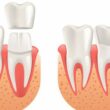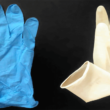Difference Between Cerebrum And Cerebellum
The cerebrum is the largest part of the brain, accounting for four-fifths of its total weight. It is made up of two sections, or hemispheres. Moreover, each hemisphere has four parts, or lobes—the frontal, parietal, temporal, and occipital lobes.
The surface of the cerebrum consists of thin layers of nerve tissue called gray matter—neuron-cell bodies, dendrites, nonmyelinated axons, and supporting cells, which are known as neuroglia.
The gray matter in turn is known as the cerebral cortex. This area is made up of an intricate series of folds, or convolutions, that are akin to an endless succession of hills and valleys. Underneath the gray matter is the white matter, which makes up the bulk of the cerebrum. It consists of nerve fibers coated with myelin, which accounts for the white color. Still deeper within the two hemispheres of the cerebrum is more gray matter. The neurons it contains serve as relay stations in the nerve pathways that lead to and from the cerebral cortex.
The development of the cerebral cortex accounts for the human ability to learn, to modify behavior as a result of experience, and to engage in abstract reasoning. If the cortex does not develop in a human being, he or she becomes incapable of learning and reasoning. Before the cerebral cortex can perform many of its functions, it must be awake, or conscious. A special system of nerve fibers going to the outer layer of the cortex produces this state.
Different areas of the cerebral cortex perform different functions. The motor area, which gives rise to impulses that cause muscular movements, is found in the rear part of the frontal lobes. Different sections of the motor area control movements of the toes, feet, legs, thighs, trunk, arms, hands, fingers, mouth, lips, tongue, throat, and larynx. The size of a given motor area depends upon the complexity of the muscles whose movements it regulates. For example, the area concerned with movements of the face is much larger than that which governs foot movements.
The Cerebellum
The cerebellum is located in the rear of the skull. It is more or less oval, and is composed of three parts. The small central part is called the vermis; the two large sections on either side of the vermis are the cerebellar hemispheres.
The surface of the cerebellum consists of a very thin layer of gray matter—the cerebellar cortex. Underneath lies the white matter—large bundles of nerve fibers.
The cerebellum is the unconscious motor-coordination center of the brain. It responds to reflexes as well as to cortically planned movement. The cerebellum helps maintain balance, telling the body whether it is standing, walking, or lying down. By finding the right muscles, it assists in controlling all body movements. As a result, if the cerebellum is diseased or injured, equilibrium and muscle coordination will be disturbed. Interestingly, in these cases, no real paralysis takes place—only the central control is impaired.



